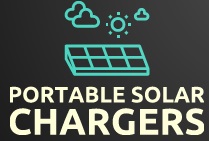In this article, you will learn how to build your very own portable solar charger. Harnessing the power of the sun, this device will allow you to charge your electronic devices on the go, making it perfect for outdoor adventures and emergencies. With easy-to-follow instructions and a list of materials, you will be able to create a sustainable and convenient charging solution in no time. Say goodbye to dead batteries and hello to endless power with your self-built portable solar charger. Let’s get started!
Materials Needed
To build a portable solar charger, you will need several materials and tools to ensure a successful and efficient project. Here is a list of the essential items you will require:
Solar panels
Solar panels are the core component of any solar charger. They are responsible for converting sunlight into electricity, which can be stored in a battery for later use.
Battery
The battery acts as a storage unit for the electricity generated by the solar panels. It allows you to use the solar energy even when the sun isn’t shining.
Charge controller
A charge controller is essential to regulate the flow of electricity from the solar panels to the battery. It protects the battery from overcharging and ensures optimal charging efficiency.
Inverter
An inverter converts the direct current (DC) from the battery into alternating current (AC), which is compatible with most common electronic devices.
USB ports
USB ports are necessary for charging small electronics, such as smartphones or tablets, directly from the solar charger.
Wires and connectors
You will need various wires and connectors to connect the solar panels, battery, charge controller, inverter, and USB ports together to form a functional system.
Enclosure
An enclosure is used to house and protect all the components of your portable solar charger. It should be weatherproof and sturdy to withstand outdoor conditions.
Mounting brackets
Mounting brackets are required to securely attach the solar panels to your portable charger, ensuring they receive the maximum amount of sunlight.
Tools
You will need a variety of tools, including screwdrivers, pliers, wire cutters, and a soldering iron, to assemble and install the various components of your portable solar charger.
Step 1: Design and Planning
Before you begin building your portable solar charger, it is crucial to carefully plan and design the system. This step will ensure that you choose the right components and determine the power requirements for your specific needs. Here are the key considerations during the design and planning phase:
Determine power requirements
First, assess your power needs and determine the amount of electricity you require. Consider the devices you plan to charge with your solar charger and calculate their power consumption. This information will help you determine the capacity of your solar panels and battery.
Calculate solar panel capacity
Based on your power requirements, calculate the solar panel capacity needed to generate sufficient electricity. Research the different types of solar panels available and select one that matches your needs and budget.
Decide on battery size
The battery size you choose should align with your power requirements and the number of devices you plan to charge. Consider the battery’s capacity, voltage, and overall performance when making your selection.
Select charge controller and inverter
Choose a charge controller that matches the voltage and capacity of your solar panels and battery. Additionally, select an inverter that can handle the power output of your battery and is compatible with your devices.
Choose enclosure and mounting options
Consider the size and weight of your solar charger when choosing an enclosure. It should be spacious enough to accommodate all the components while providing adequate protection. When selecting mounting brackets, ensure they are sturdy and easy to install on your chosen enclosure.
Step 2: Assembling the Solar Charger
Once you have completed the design and planning phase, it’s time to start assembling your portable solar charger. Follow these steps to ensure a smooth assembly process:
Install charge controller
Begin by installing the charge controller inside the enclosure. This component is responsible for regulating the flow of electricity between the solar panels and battery. Follow the manufacturer’s instructions for proper installation.
Connect solar panels
Connect the solar panels to the charge controller, following the recommended wiring diagram. Double-check the polarity of the connections to ensure they are correct.
Connect the battery
Next, connect the battery to the charge controller. Again, refer to the manufacturer’s instructions for the appropriate wiring connections. Take care to connect the battery cables securely.
Install USB ports
Add the USB ports to the enclosure, allowing easy access for charging your electronic devices. The number of ports will depend on the number of devices you plan to charge simultaneously.
Incorporate the inverter
Install the inverter inside the enclosure and connect it to the battery. Ensure that the inverter is compatible with both the battery voltage and the power output of your electronic devices.
Ensure proper wiring
Check all connections and ensure that the wiring is secure and properly insulated. Use zip ties or cable clamps to organize and route the wires neatly to avoid any potential interference.
Step 3: Testing and Troubleshooting
After assembling the solar charger, you should test its functionality and troubleshoot any potential issues. Follow these steps to ensure everything is working correctly:
Check connections
Carefully inspect all the wiring connections, ensuring that there are no loose or damaged wires. Verify that each component is securely connected and that there are no signs of overheating or burning.
Measure voltage and current
Using a multimeter, measure the voltage and current coming from the solar panels to the charge controller and from the battery to the inverter. Ensure that the readings align with your expected values.
Test USB ports
Connect your electronic devices to the USB ports and check if they charge properly. Test multiple devices to verify that the ports can handle various power requirements.
Ensure proper functioning of the charge controller
Monitor the charge controller’s indicators and ensure that it is effectively regulating the flow of electricity. Verify that it’s preventing overcharging and maintaining optimal battery performance.
Identify and fix any issues
If any issues arise during testing, carefully analyze the problem and troubleshoot accordingly. Address any faulty connections, components, or settings to ensure the smooth operation of your portable solar charger.
Step 4: Enclosure and Mounting
Now that you have tested and fine-tuned your solar charger, it’s time to secure it inside the enclosure and mount it in a suitable location. Follow these steps for a secure enclosure and mounting:
Choose a suitable enclosure
Select an enclosure that is weather-resistant and provides adequate protection for your solar charger components. Consider the size, weight, and durability of the enclosure, ensuring it aligns with your specific requirements.
Install all components inside the enclosure
Carefully place all the components inside the enclosure, ensuring they are securely mounted. Arrange the components in a logical and organized manner to facilitate easy access and maintenance.
Ensure proper insulation and protection
Make sure all exposed connections and wiring are properly insulated and protected. Use heat-shrink tubing, electrical tape, or cable glands to safeguard against moisture and potential short circuits.
Securely mount the solar charger
Choose a suitable location for your portable solar charger, such as a rooftop or a portable stand. Ensure the mounting brackets are securely attached to the charger and the surface. Double-check that the solar panels receive maximum sunlight exposure.
Step 5: Safety Measures
Safety should be a top priority when constructing a portable solar charger. Follow these essential safety measures to protect yourself and your equipment:
Follow electrical safety guidelines
Adhere to all electrical safety guidelines when working with your solar charger. This includes wearing appropriate protective gear, ensuring proper grounding, and avoiding contact with live wires.
Protect from overcharging
Implement measures to prevent overcharging, as it can damage the battery and reduce its lifespan. The charge controller should have built-in protections, but additional precautions, such as setting the charge controller correctly, can be beneficial.
Use appropriate wiring and connectors
Select high-quality wires and connectors that are suitable for outdoor use. Opt for connectors with built-in protective features, such as dust and water resistance.
Take precautions during installation
Be mindful of electrical hazards during the installation process. Ensure that all connections are properly insulated and that you are not working near water or in adverse weather conditions.
Ensure proper grounding
Properly grounding your solar charger helps protect against electrical faults and ensures safe operation. Follow the recommended guidelines for grounding your system to avoid any potential risks.
Step 6: Maintenance and Upkeep
To maximize the efficiency and lifespan of your portable solar charger, regular maintenance and upkeep are necessary. Follow these steps to keep your system in optimal condition:
Clean solar panels regularly
Dirt, dust, and debris can reduce the efficiency of your solar panels. Regularly clean the panels to ensure maximum sunlight absorption. Use a soft brush or sponge and mild detergent to remove any built-up grime.
Monitor battery health
Regularly check the battery’s charge level and monitor its health. If the battery exhibits signs of degradation or reduced performance, consider replacing it to maintain optimal charging and usage capabilities.
Check wiring for any damages
Inspect the wiring connections for any signs of wear or damage. Ensure that there are no loose connections, exposed wires, or signs of overheating. Repair or replace any faulty wiring immediately.
Update software or firmware
If your charge controller or inverter has software or firmware updates available, consider updating them periodically to benefit from improved performance, features, and bug fixes.
Replace faulty components
If any component of your portable solar charger becomes faulty or damaged beyond repair, replace it promptly to ensure the system’s overall efficiency and reliability.
Step 7: Portable Features
To make your solar charger more convenient and user-friendly for outdoor use, consider incorporating the following features:
Consider weight and size
Opt for lightweight and compact components to reduce the overall weight of your portable solar charger. This will enhance its portability and ease of use when traveling or hiking.
Include handle or carrying options
Incorporate handles, straps, or carrying options into the design. This will make it easier to transport your solar charger from one location to another.
Design for ruggedness and durability
Ensure that your portable solar charger is designed to withstand outdoor conditions. Consider using durable materials and reinforcing weak points to enhance its ruggedness and durability.
Integrate charging indicators
Include LED indicators or digital displays to provide real-time information about the charging status, battery level, and overall performance of your solar charger.
Include storage compartments
Incorporate storage compartments or pockets into the enclosure design. This allows you to keep small accessories, cables, or devices organized and easily accessible.
Optimize portability for travel
Ensure that your portable solar charger is designed to meet travel regulations and standards. Consider the size, weight, and compatibility with different power outlets in various countries.
Step 8: Additional Considerations
To further enhance the performance and versatility of your portable solar charger, consider the following additional considerations:
Optimize solar panel angle
Adjust the angle of your solar panels to maximize sun exposure and increase the charging efficiency. Experiment with different positions to find the optimum angle for your location.
Consider using a solar tracker
A solar tracker can automatically adjust the orientation of your solar panels to follow the sun’s path throughout the day. This feature increases the energy output of your system.
Use energy-efficient devices
To maximize the usage time of your portable solar charger, consider using energy-efficient devices. This will allow you to charge more devices with the available solar energy.
Explore alternative charging methods
In addition to solar energy, explore other renewable energy sources such as wind or hydro power. Integrating multiple charging methods can increase the charging capacity and reliability of your portable solar charger.
Ensure compatibility with various devices
Ensure that your portable solar charger has the necessary connectors and compatibility with a wide range of devices. This will allow you to charge different electronic devices without compatibility issues.
Step 10: Finalizing and Using Your Portable Solar Charger
Once you have completed the construction and testing phases, it’s time to finalize your portable solar charger and start enjoying the benefits of clean, renewable energy on the go. Follow these final steps:
Perform thorough testing
Before fully relying on your solar charger, conduct a final round of comprehensive testing to ensure that all components are functioning correctly and providing the expected power output.
Document specifications and steps
Keep a detailed record of the specifications, settings, and steps involved in building your portable solar charger. This documentation will be useful for troubleshooting and future reference.
Ensure user-friendliness
Test the user-friendliness of your solar charger by using it in different scenarios. Assess the ease of setup, charging efficiency, and overall usability to identify any areas for improvement.
Take advantage of solar energy on the go
Now that you have a fully functional portable solar charger, take advantage of this clean and renewable energy source wherever you go. Utilize it for camping trips, outdoor activities, or emergency power backup, and reduce your reliance on traditional power sources.
By following this comprehensive guide, you can successfully build a portable solar charger that meets your power needs, enhances your outdoor experiences, and contributes to a greener and more sustainable future.





